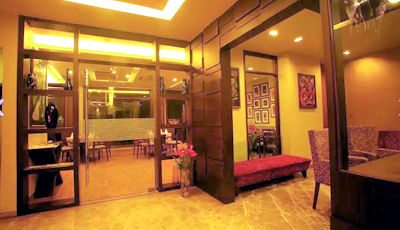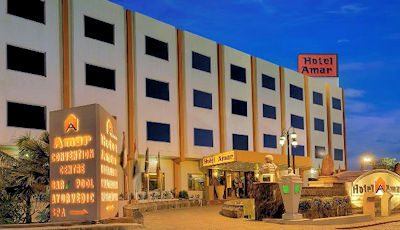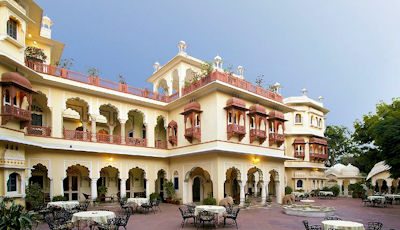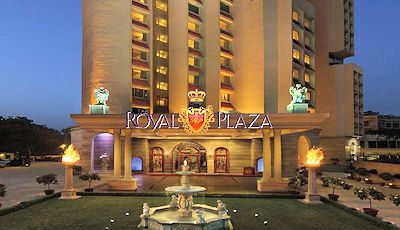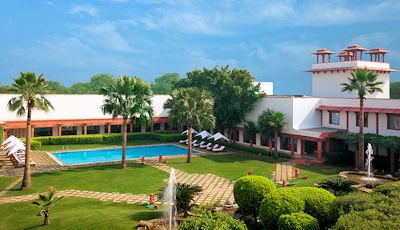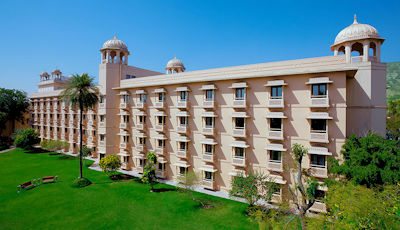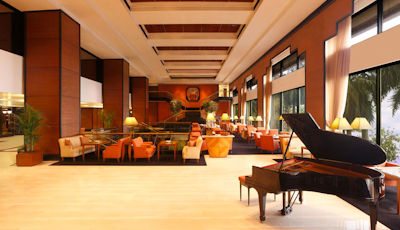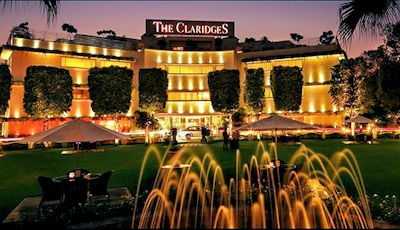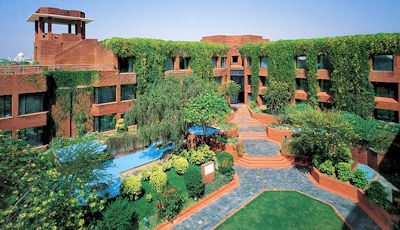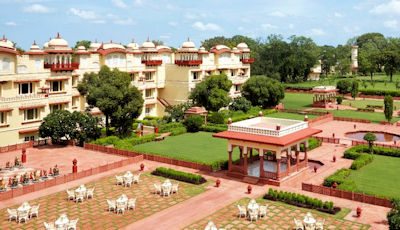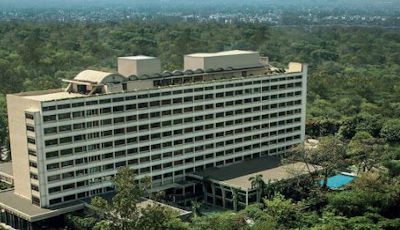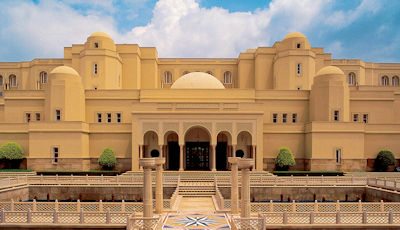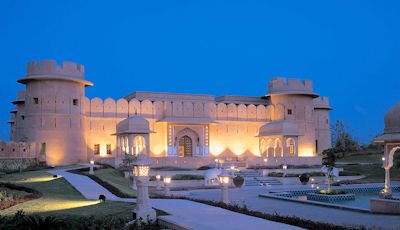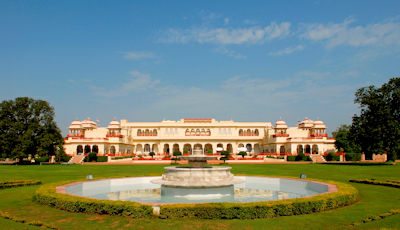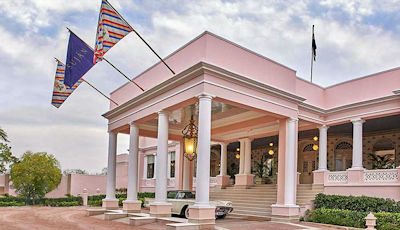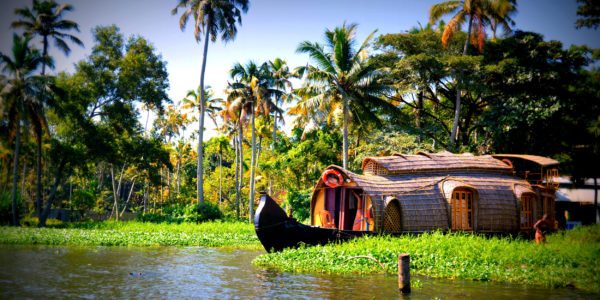Private Tour Highlights
- Visit the most opulent Fort and Palace of the Mughal Empire, the Red Fort
- See firsthand the colorful and bustling market of Chandni Chowk
- Gaze into India’s past by visiting the spot where Ghandi was assassinated
- See the impressive India Gate, honoring the 70,000 Indian soldiers who lost their lives
- Take a tour of the stunning Taj Mahal, India’s most picture perfect work of architecture
- Stroll through the regal chambers of Agra Fort, once home to powerful emperors
- Experience a sound and light show at the city’s Amber Fort
- See the rock-cut temples on peaceful Elephanta Island
- Explore the turrets and intricate latticework of the Gateway of India
- Stroll through Crawford Market to sample some local meat and produce
- See the impressive mixture of Gothic and Moorish styles at the Prince of Wales Museum
Tour Overview
Including a visit to Mumbai, the financial powerhouse of India, this tour also includes spectacular sites in the country’s most popular destinations – New Delhi, Agra and Jaipur. After seeing New Delhi’s Red Fort, the Taj Mahal, and Fatehpur Sikri en route to Jaipur, you will transfer to Mumbai. Here, you can walk to the iconic Gateway to India, take a boat ride to the Elephanta Cave Temples and explore the rest of this booming metropolis.
This popular Yampu trip includes New Delhi, Agra and Jaipur as well as an extension to Mumbai. With a captivating blend of commercial buzz, grand Victorian architecture and modern high rises, the customs and color of Mumbai create a truly multi-cultural atmosphere. Behind the veil of its modern image, the city hosts a variety of cultural and historical sites that link it to its colorful past. Located one hour by boat out of Mumbai, visit the Elephanta Caves; a UNESCO World Heritage Site hosting a brilliant temple carved out of the rock.
Mumbai is also home to the Gateway of India, the huge iconic archway on the water’s edge, which is a great point to explore the harbor from. Then, in the old British part of town, you will find the Crawford Market, an elegantly designed market with a dominating clock tower and steeple. For a trip into the past, the Prince of Wales Museum is sure to impress with a huge collection of ancient Indus Valley artifacts and priceless art pieces from Tibet and Nepal. Although Mumbai has become an immense megalopolis, there are a multitude of treasures that are hidden among its high-rises that make it a classic destination to visit.
Inclusions
One way domestic airfare from Jaipur to Mumbai, all accommodations with continental or buffet breakfast, service of deluxe air-conditioned vehicle, one time entrance fees at all monuments, services of English speaking local guide for excursions, all currently applicable taxes including service tax
Notes:
* The Red Fort in Delhi remains closed on every Monday
* The Taj Mahal in Agra remains closed on every Friday
* The Elephanta Caves and Prince of Wales museum in Mumbai remain closed on Mondays
* Additional supplements may apply between 1 – 20 November, 20 December – 10 January and 1 – 28 February. Please ask a Yampu Travel Consultant for more details.
Trip Type:
All our trips are operated on a private basis unless specified otherwise. This is only a sample itinerary; your Yampu Tour Consultant will personalize this trip for you according to your available dates, interests and type of hotels. This is your trip and we will work on making it perfect!
Tour Itinerary
Flight to New Delhi
Overnight international flight to New Delhi.
Overnight international flight to New Delhi.
Arrival in New Delhi
Upon arrival and airport reception, transfer to the hotel. Depending on arrival time, spend the rest of the day at leisure.
Upon arrival and airport reception, transfer to the hotel. Depending on arrival time, spend the rest of the day at leisure.
Tour of New Delhi
Here read more...
Here see Red Fort, recognized as the most opulent Fort and Palace of the Mughal Empire. The fort is Shah Jehan's symbol of power and elegance, built behind red sandstone walls. Its main gate (Lahore Gate) faces Chandni Chowk; the perpetually congested avenue heading west from the Red Fort is filled with twisting lanes, small streets and crowded bazaars.
Also visit Jama Masjid (the largest mosque in India), Chandni Chowk, and the bustling and colorful market of the old city. Chandni Chowk was the commercial center of Delhi in the old time it will come alive in the morning as the trading day starts, and Raj Ghat. Raj Ghat has a simple memorial to the Father of the Nation, Mahatma Gandhi, marking the spot where he was assassinated by Nathuram Godse in 1948. A commemorative ceremony is held here every Friday. The first Prime Minister of India, Jawaharlal Lal Nehru, was also cremated to the north of the memorial at Shanti Van (Forest of Peace). The area is now a beautiful park laden with trees. The Zinat-ul Masjid (Most Beautiful of Mosques) towers over the Raj Ghat.
After the metro ride continue to visit New Delhi to visit two monuments from Delhi's past - Qutub Minar and Humayun's Tomb. In 1199, Qutub-ud-Din raised the Qutub Minar either as a victory tower or as a minaret to the adjacent mosque. Humayun's tomb, which was built by emperor Humayun's wife, took eight years to complete and is regarded as an example of the early Mughal architecture. The emperor's wife, Begai Begum, was buried in the tomb and the structure is the first of its kind built in the center of a well-planned garden. The combination of white marble and red sandstone was a great influence on later Mughal architecture. It is generally regarded as a prototype of the famed Taj Mahal of Agra.
The drive meanders along the ceremonial avenue, Rajpath, past the imposing India Gate. At the center of New Delhi stands the 42m high India Gate, an Arc-de-Triomphe like Archway in the middle of a crossroad. It commemorates the 70,000 Indian soldiers who lost their lives fighting for the British Army during the First World War and bears the names of more than 13,516 British and Indian soldiers killed in the North-western Frontier in the Afghan war of 1919. The foundation stone was laid by His Royal Highness, the Duke of Connaught in 1921 and was designed by Edwin Lutyens. The Presidential House is a palatial building built on an area of 330 acres with a private garden designed by the illustrious Lutyens, originally as the official residence of the Viceroy of India during British reign, is now the official residence of the First Citizen and the Parliament House.
...read less
New Delhi - Agra
Begin read more...
Begin with a drive to Agra that will take approximately 4 hours. Upon arrival, check into the hotel. Then proceed for a sightseeing tour of the stunning Taj Mahal, India’s most picture perfect work of architecture and one of the Seven Wonders of the Modern World.
The area around the Taj Mahal is a protected area and the parking is approximately one kilometer away from the monument. Here, disembark and board battery buses to the Taj.
That magnificent monument of love - The Taj Mahal, was built by an emperor in memory of his beloved queen. Construction of the Taj Mahal began in 1631, and is believed to have taken 22 years to complete, with over 20,000 craftsmen working round the clock. The design and construction is said to be that of the legendary architect, Ustad Ahamad Lahori.
In the impressive Agra Fort, walk through the chambers of this royal residence. On the drive through the city, witness the local life and bazaars and the hustle bustle of everyday India. Agra Fort is officially recognized as a UNESCO World Heritage site. The fort is also known as Lal Qila, Fort Rouge and Red Fort of Agra. It is about 2.5 km northwest of its much more famous sister monument, the Taj Mahal. The fort is often described as a walled palatial city and as the most important fort in India. The great Mughals Babur, Humayun, Akbar, Jehangir, Shah Jahan and Aurangzeb lived here, and the country was governed from here. It contained the largest state treasury and mint. It was visited by foreign ambassadors, travellers and the highest dignitaries who made history in India.
...read less
Day Tour of Agra
Fatehpur read more...
Fatehpur Sikri was the imperial city of the Mughal dynasty between 1571 and 1584. Fatehpur Sikri was built by Mughal Emperor Akbar. The architectural grandeur of this deserted city cannot be described in words and one can only experience the aura of its magnificent edifices by seeing them.
As one enters Sikri from the Agra Gate, one of the nine gateways on the way to the palace complex, Diwan-I-Aam, or the hall of public audience appears first. It is a huge rectangular walled-in courtyard where petitions were heard, proclamations were made, ambassadors were received and entertainment programs were held. Ponder the mysterious desertion of this capital city that was dramatically abandoned a few years after it was built. It was a veritable fairy tale city and its 'ruins' are still in a pristine condition. It is not hard to imagine what the court life must have been like in the days of its grandeur.
The Amber Fort was originally built by the Meenas in the town they consecrated to Amba, the Mother Goddess, whom they knew as Gatta Rani or Queen of the Pass. Built over the remnants of an earlier structure, the palace complex which stands today was commenced under the reign of Raja Man Singh, Commander in Chief of Akbar's army and a member of the Emperor's inner circle of nine courtiers, in 1592. The initial structure of the fort was entirely completed by his descendant, Jai Singh I. Amber was modified by successive rulers over the next 150 years, until the Kachwahas shifted their capital to Jaipur during the time of Sawai Jai Singh II.
The sound and light show at the Fort was scripted by the noted lyricist and filmmaker Gulzar for which superstar Amitabh Bachchan will lend his baritone. The one-hour show, which will be in English, will blend the visual splendor of a light show with the gripping historical narrative surrounding the Amber Fort's history.
...read less
Amber Fort Excursion
This read more...
This morning, return to the Amber Fort for a half day excursion. On a stroll through the magnificent rooms and chambers, observe the various intricate ivory, mirror and glass work. In the afternoon, enjoy a city tour that will begin at the City Palace Museum, followed by a visit to Jantar Mantar (an accurate observatory built in 1726), and great photographic opportunity at the Hawa Mahal or Palace of Winds - a spectacular five storied, honeycomb styled building exemplifying superb Rajput artistry.
Note: Yampu recommends an optional tour (price not included) of an evening elephant safari. After a chance to feed these gentle creatures, ride upon their backs through a private jungle area, passing many villages, fields, and a medieval fortress as the sun sets. Please inquire with a Yampu travel consultant for more information.
...read less
Agra - Mumbai
Transfer to the airport for a flight to Mumbai. Upon arrival, transfer to the hotel. Spend the remaining time at leisure settling in, getting used to the surroundings, or exploring the city.
Transfer to the airport for a flight to Mumbai. Upon arrival, transfer to the hotel. Spend the remaining time at leisure settling in, getting used to the surroundings, or exploring the city.
Tour of Mumbai
Elephanta read more...
Elephanta Caves: Located one hour by boat out of Mumbai, are the rock-cut temples on peaceful Elephanta Island. Thought to have been carved between 450 and 750 AD, the temples survived Portuguese vandalism (one cave was reputedly used by a Portuguese battalion as a shooting gallery) and remain equal in size, beauty and power to the caves at Ajanta and Ellora. The main cave contains large sculpted panels relating to Siva, including the astonishing 6m/20ft-high triple-headed Trimurti - in which Siva embodies the roles of creator, preserver and destroyer. In 1987, it was designated a UNESCO World Heritage Site.
First, transfer to the jetty at the Gateway of India to board boats (small local launches) to Elephanta Island where an 8th-century shrine cut from the hillside can be seen. Among the sculptures is the magnificent Maheshmurti, or Hindu Trinity, representing the three aspects of Shiva the Creator, the Preserver and the Destroyer. These caves provide an exciting glimpse of Indian sculpture dating from about 600 A.D. Huge panels depict episodes relating to Lord Shiva, each executed with power, grace and an amazing sense of movement.
Gateway of India: Mumbai's principal landmark, the Gateway of India is a huge archway on the water's edge. This famous monument was built to commemorate the visit of the first ever British Monarch, King George V and Queen Mary in 1911. It is composed of 26m high structures, complete with four turrets and intricate latticework carved into the yellow basalt stone. Behind the arch, there are steps leading down to the water. Here, one can get onto one of the bobbing little motor launches, for a short cruise through Mumbai's splendid natural harbor.
Crawford Market: Named after Bombay's first municipal commissioner, Arthur Crawford, the Crawford Market is at the northern end of the old British part of the town, and faces the crowded inner city. An elegant covered market, it dominates the skyline with its clock tower and steeple. The cavernous spaces inside are divided into sections for fruits, vegetables and meat. The building, completed in 1869, was donated to the city by Cowasji Jehangir. The friezes on the outside walls and the stone fountains inside were designed by Lockwood Kipling.
Prince of Wales Museum (Closed on Monday) - Barely a stone's throw from the Gateway of India is the Prince of Wales Museum, a magnificent, but somewhat strange structure, built in a confluence of Gothic and Moorish styles, and crowned by a sparkling white dome. It boasts an outstanding collection of ancient Indus Valley artifacts dating back to 2000 BC, plus some priceless Tibetan and Nepali Art. There is an entire gallery devoted to Buddhist tankha scrolls and another to Tibetan bronzes, but the chief attraction here is the collection of over 2000 miniature paintings from the various art schools of India. Overnight at the hotel.
...read less
Flight home from Mumbai
Transfer to the airport for the flight home or continue with an optional Yampu Tours add-on.
Note: Check out of the hotel is at 12 pm. Late check out may be available directly at the hotel subject to availability. Regardless, store luggage at the hotel until ready to leave for the airport.
Transfer to the airport for the flight home or continue with an optional Yampu Tours add-on.
Note: Check out of the hotel is at 12 pm. Late check out may be available directly at the hotel subject to availability. Regardless, store luggage at the hotel until ready to leave for the airport.
Places You'll See
-
Mumbai
There is much to see in the city of Mumbai, from the modern presence of Bollywood, to the colonial buildings showcasing examples of the Gothic revival. Immerse yourself in the hustle of the crowds at the street markets and vendors, or take a peaceful stroll along Juhu Beach. Enjoy the city’s vibrant theater scene and catch a performance at the Prithvi Theater.
-
Jaipur
Nicknames the Pink City, Jaipur is home to several enticing attractions. Visit the Amber Fort, once the royal palace for the Kachwahas, and see the impressive evening light show. Explore the massive City Palace inside the old city. Take a peaceful stroll through one of the many gardens, or purchase some unique souvenirs at the city center bazaar.
-
Agra
Visit the famous Taj Mahal, one of the New 7 Wonders of the world, in Agra. Take a guided tour through the immense, white marble mausoleum, built by Emperor Shah Jahan in memory of his late wife, a true monument of love. While in Agra, also visit the Agra Fort, mainly constructed from sandstone, it’s more of a palace than a defense structure.
-
Delhi
Home to India’s largest mosque, the Red Fort, Delhi is abundant in historical artifacts and cultural events. Visit the Baha’i Lotus Temple, a beautiful building in the shape of a lotus bud, or the Kiran Nadar Museum of Art. To get a real taste of area, take a food tour to experience the local cuisine. Or take a peaceful morning walk in the Lodhi Garden.
Hotel Options
3 Star Properties
4 Star Properties
5 Star Properties
Testimonials
Ruben D. (travel agent)
Traveled October, 2012
I would recommend contacting Yampu Tours
I would recommend contacting Yampu Tours. They are great to work with and the documentation for clients is exceptional.
Traveled To
Don
Traveled December, 2012
Everything was great and I have no complaints
Everything was great and I have no complaints. I’ve been the Delhi before but never Varanasi. Truly the toilet bowl of the world. Dirtier than my own mouth, if you can believe it. However, at the same time it was an amazing experience.
Traveled To
Lucy and John
Traveled April, 2012
India and Sri Lanka were an amazing combination!
India and Sri Lanka were an amazing combination! The hustle of India is exciting, but also overwhelming so including Sri Lanka toward the end of our itinerary was an amazing way to relax and unwind! In India we were blown away by the service at the Deluxe hotels, and even the 4-star hotels. The hospitality in India is incredible with everyone working to make sure you are comfortable and happy. We loved the Oberoi hotels, the rooms were beautiful and the service was immaculate. The sites in India were truly amazing and we loved the elephant safaris and interactions were we were able to bathe and paint these gentle giants! During our long transfers in India our driver was pleasant, providing us with interesting facts but not overwhelming us with too many details or idle chatter. In Sri Lanka we absolutely loved the Temple of the Tooth, the atmosphere is so humbling and spiritual; absolutely a must-see! We loved the ancient site of Polonnaruwa and the lying down Buddha and the elephant orphanage at Pinnawela. We also really enjoyed climbing the Sigiriya rock fortress, although its not the best option for those who are scared of heights!
Traveled To





